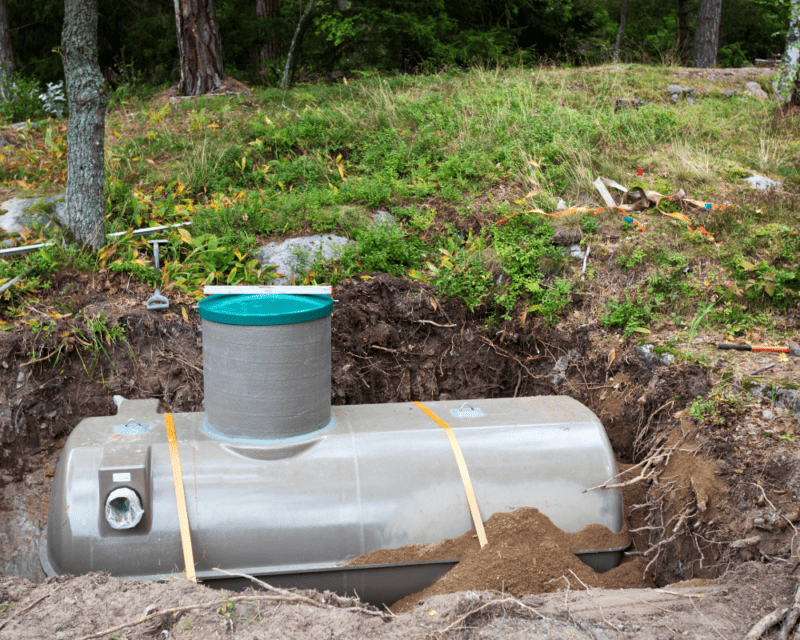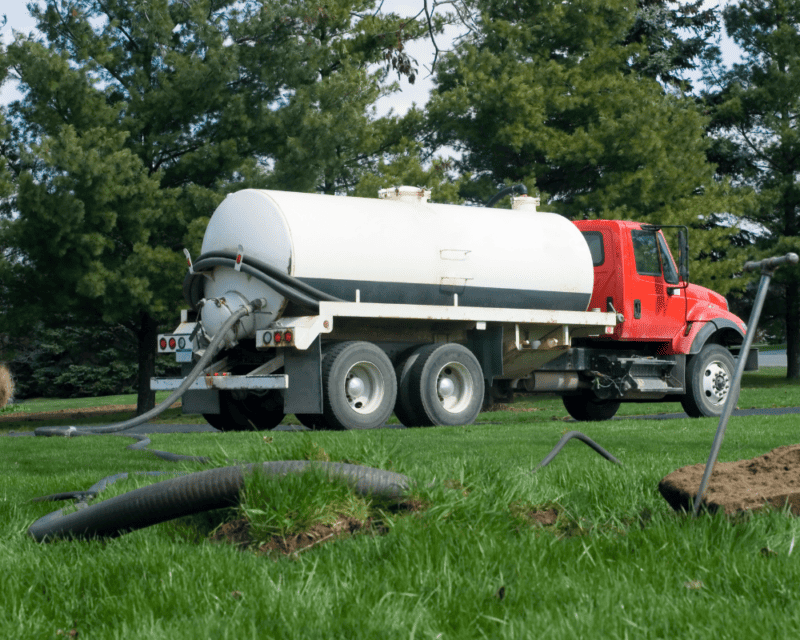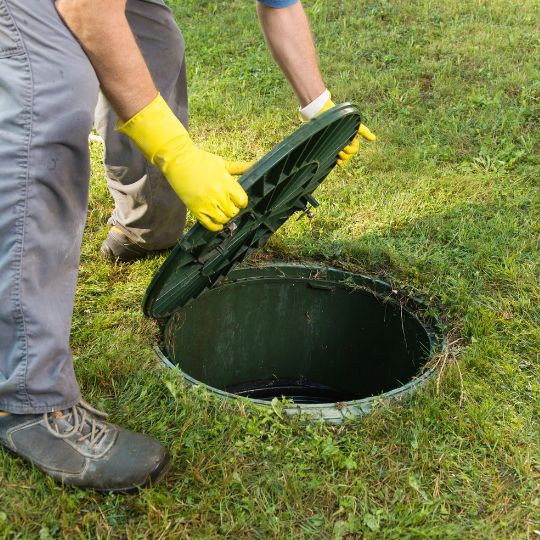Are you curious about what a septic tank is used for? Well, look no further! In this article, we will explore the purpose and function of septic tanks, so you know exactly what you’re dealing with.
Septic tanks are large containers made from concrete, fibreglass, or polyethene. The primary role of a septic tank is to collect and treat wastewater, ensuring that it does not contaminate the environment or pose health risks. Usually, tanks will require special care and treatment by professional waste management companies to ensure they remain safe for use.
So, if you live on a property without access to mains drainage, understanding how a septic tank works and its benefits can be crucial for maintaining hygiene and environmental standards. Additionally, choosing products like septic friendly toilet paper can help preserve the efficiency of your system and prevent clogs or unnecessary build-up.
1. Wastewater Collection and Treatment

A septic tank is essential to wastewater collection and treatment, ensuring that harmful substances are effectively removed from our environment. It is crucial in managing domestic sewage and wastewater in areas without access to a centralised sewer system.
The wastewater flows into the septic tank when you use water, whether from flushing toilets, showers, or washing dishes. Inside the septic tank, solid waste settles at the bottom while oils and greases float to the top. Bacteria present in the tank break down these organic materials over time. This natural decomposition process helps separate and treat the wastewater.
The treated water exits the septic tank through an outlet pipe and enters a drain field or soakaway system, which percolates into the soil for further purification.
A septic tank is vital in maintaining proper sanitation standards and protecting our environment by effectively treating household wastewater. It ensures that harmful substances are properly contained and prevented from polluting nearby water sources or causing damage to ecosystems.
So, next time you use water in your home, remember that your septic tank works hard behind the scenes to keep our surroundings clean and safe.
2. Bacterial Decomposition Process
To keep your wastewater clean and odour-free, you should regularly maintain the bacterial decomposition process in your septic system.
This process is crucial for breaking down solid waste and turning it into liquid form, which the soil can easily absorb. The bacteria present in the septic tank play a vital role in this decomposition process as they feed on the organic matter present in the wastewater.
The first step of the bacterial decomposition process occurs inside the septic tank. When wastewater enters the tank, it settles down, allowing heavy solids to sink to the bottom while lighter substances like oils and fats float to the top.
Bacteria that thrive in an oxygen-deprived environment break down these solid wastes through anaerobic digestion. This natural biological process converts complex organic compounds into simpler forms like water, carbon dioxide, and methane gas.
Regular septic system maintenance includes adding bacteria supplements or activators to enhance this decomposition process. These supplements introduce additional aerobic bacteria that help break down any remaining solids not fully decomposed during anaerobic digestion.
It’s important to remember that household products like bleach and antibacterial soaps can kill off these beneficial bacteria, disrupting their ability to decompose waste effectively.
Therefore, using septic-safe cleaning products and avoiding excessive use of harsh chemicals is essential for maintaining a healthy bacterial ecosystem in your septic tank.
3. Separation of Solid and Liquid Waste

One way to ensure a clean and odour-free wastewater system is by efficiently separating solid and liquid waste. This is where the septic tank comes into play.
When wastewater enters the septic tank, it undergoes a process called sedimentation. The heavier solid waste settles at the bottom of the tank, while the lighter liquid waste floats to the top. This separation allows for easier treatment and disposal of each type of waste.
Once the solid waste has settled at the bottom of the septic tank, bacteria begin breaking it down through bacterial decomposition. This decomposition helps reduce the volume of solid waste over time, preventing blockages or buildup in the system.
On the other hand, the liquid waste that floats to the top contains fats, oils, and other substances that can potentially clog pipes or cause damage to drainage fields if not properly treated. Separating these two types of waste in a septic tank ensures that your wastewater system remains efficient and free from unpleasant odours or backups.
4. Drain Field and Effluent Treatment
Ensure you properly maintain and care for your drain field to ensure efficient effluent treatment and prevent potential damage or contamination.
The drain field, also known as the leach field, is an essential component of a septic tank system. It is responsible for the final treatment of wastewater that has passed through the septic tank. Once the liquid waste, or effluent, leaves the septic tank, it flows into the drain field, where it is dispersed into the soil.
To maintain your drain field, it is important to avoid placing heavy objects or driving vehicles over it, as this can compact the soil and hinder its ability to absorb and treat wastewater effectively.
Regularly inspect your drain field to check for any signs of problems, such as standing water, foul odours, or overly lush vegetation, which may indicate drainage issues.
Additionally, minimising water usage in your household can help reduce stress on the drain field by preventing excessive amounts of wastewater from entering it immediately.
Following these guidelines and properly maintaining your drain field, you can ensure that effluent is efficiently treated and prevent any potential contamination or damage.
5. Environmental Benefits and Waste Management

Properly maintaining and caring for your drain field can contribute to a healthier environment and more effective waste management.
One of the main environmental benefits of a septic tank system is that it helps prevent groundwater contamination. When wastewater enters the septic tank, solid waste settles at the bottom while oils and fats float to the top.
The remaining liquid, known as effluent, flows into the drain field, undergoing further treatment through natural processes. The drain field consists of a network of perforated pipes buried in gravel-filled trenches. These pipes distribute the effluent evenly into the surrounding soil, allowing it to be naturally filtered and treated by beneficial bacteria and other microorganisms.
As the effluent percolates through the soil, harmful pathogens and pollutants are removed or neutralised, preventing them from reaching groundwater sources such as wells or nearby bodies of water.
By ensuring proper septic tank system maintenance and regularly inspecting your drain field for any signs of damage or blockages, you can help protect human health and the environment by preventing contamination and promoting effective waste management.
So, What Is A Septic Tank Used For?
In conclusion, a septic tank is an essential part of wastewater management in the UK. It collects and treats household sewage and other wastewater from toilets, sinks, and showers.
The system relies on bacterial decomposition to break down the organic matter present in the waste, which then separates into solid sludge and liquid effluent. The solid waste settles at the bottom of the tank while the liquid effluent flows out into a drain field for further treatment.
This process helps prevent harmful contaminants from entering groundwater or surface water sources and promotes environmental sustainability by recycling valuable nutrients into the soil.
So next time you flush or drain something down your sink, remember that it’s thanks to septic tanks that our living environment remains clean and healthy!

